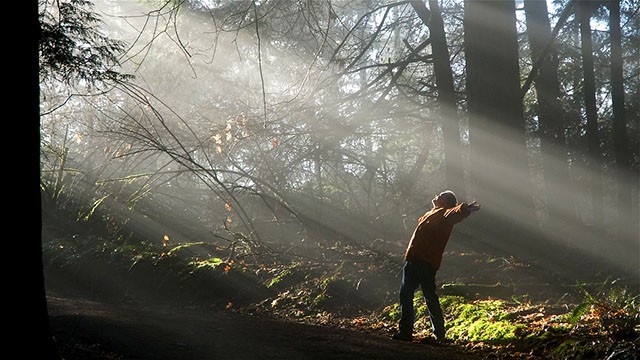7 photographs who will help develop creativity
Many photographers creativity as
the tides - the rolls, then leaves. Sometimes the creative impulse is useful
artificial stimulation that helps to see the world in a new way to promote,
update or improve your photos.
There are many ideas that are
designed to overcome the creative stupor or inspire further expand artistic
boundaries. Some websites and books offer tasks and exercises for the brave
photographers. We prefer those which: 1) are associated with the use of the
camera 2) is less tied to a particular location, 3) funny!
Exercises for development of
creativity, which have been handed down from generation to generation and have
proven effective. (Unfortunately, we can not back them up with information
about who invented the first one or the other technique).
1. Two dozen
Select a place and not leaving, make 24 unique photographs. (You can not move his legs immobile).
Even if
you stand in front of a brick wall, it will be a very enlightening experience.
After about 12 frames you feel that all options are exhausted, then, and start
creativity, squeezing out the full potential of existing equipment and the
surrounding area.
2. One dozen
Make 10 unique and / or abstract pictures one small object. The
smaller the object, the more difficult the task. Not tricky, "little
thing" is not your kind of town.
3. Four Corners
Choose
one subject and take four images, each time placing it in another corner of the
frame.
You can
go to the other side of the object? Do the same thing. Shoot on all four sides
in all four corners, if possible. See what happens!
Exercise
4: Artificial restrictions
Think of
a restriction on the filming one day or for the weekend.
Restrictions
can be:
• A lens
with the same focal length
• One
area
• only in
black and white
• Only
from 16.00 to 17.00
• Only
manually
• All
overexpose / underexpose
• Only
spot metering
• To
photograph only sitting
• Remove
only what is above you
• Remove
only what is below you
• No
people in the frame
• No
buildings in the frame
• Fill
the frame
• To the
negative (negative) the space occupied for more than three fourth of the frame.
These or other boundaries may be encouraged to compositional diversity.4. Filming on the "film"
Go somewhere where you've always wanted to take pictures,
but always postponed. Take pictures on your digital camera, but imagine that
it's loaded coil film 24 or 36 frames.
Before you press the shutter release, look and think,
remember a limited supply of "film". If that does not lead you to a
more deliberate approach, regarding the shooting images, then pretend you reel
in the 12 frames. When the "film" is over, just walk or sit and enjoy
the environment.
5.Twelve abstractionsTake a picture of a dozen abstractions of the subject. Depending on the size of your subject, you may need a macro lens or a telephoto. This task is similar to the exercise №2, but abstraction is to push for a deeper gaze.
6. Portable entity
Select an
object that can carry around with you and be done with it a variety of frames,
regardless of the place of the shooting.
Take your
favorite "thing" for a walk and find a way to include it in your
pictures. Notice how it affects the framing and composition. Turn your
creativity with the placement of the portable object.
7. SELF "neselfi"You will be in each frame. But it should not look like a normal self. So take a tripod or alternative support. Begin to invent composition of the picture, then become so to get into the frame and use the self-timer. Let the pictures you will get a meaningful and thoughtful.








Comments